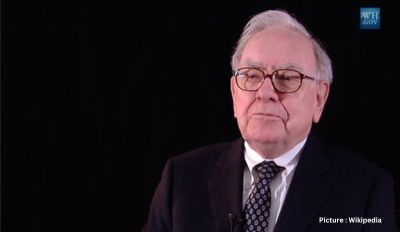President-elect Joe Biden unveiled a $1.9 trillion relief package Thursday that included more stimulus payments and other direct aid, but don’t expect to see those funds in your bank account anytime soon. There’s a lot that has to happen before Biden’s plan — which is chock-full of measures long favored by Democrats — becomes law. And even though Democrats will soon control the White House and both chambers of Congress, that doesn’t mean lawmakers will follow Biden’s suggestions to the letter.
As per Kevin Kosar, resident scholar at the right-leaning American Enterprise Institute and co-editor of the book “Congress Overwhelmed,” the earliest the stimulus money could reach one’s home maybe mid- to late February.
Biden’s massive plan includes several immediate relief items that are popular with a wide swath of Americans, including sending another $1,400 in direct stimulus payments, extending unemployment benefits and eviction protections, and offering more help for small businesses. It also would boost funding for vaccinations by $20 billion and for coronavirus testing by $50 billion.
But it also calls for making some larger structural changes, such as mandating a $15 hourly minimum wage, expanding Obamacare premium subsidies and broadening tax credits for low-income Americans for a year.
It’s the first of two measures Biden has planned to right the nation’s economy and fight the coronavirus. He intends to announce a recovery strategy at his first appearance before a joint session of Congress next month.
The plan, which would require congressional approval, is packed with proposals on health care, education, labor and cybersecurity. He has outlined a five-step approach to getting the vaccination to the American people, and to ensure that it is distributed equitably. “Equity is central to our COVID response,” he said.
Here’s a look at what’s in Biden’s plan:
CONTAINING THE VIRUS
— A $20 billion national program would establish community vaccination centers across the U.S. and send mobile units to remote communities. Medicaid patients would have their costs covered by the federal government, and the administration says it will take steps to ensure all people in the U.S. can receive the vaccine for free, regardless of their immigration status.
— An additional $50 billion would expand testing efforts and help schools and governments implement routine testing. Other efforts would focus on developing better treatments for COVID-19 and improving efforts to identify and track new strains of the virus.
THE VACCINATION PLAN
— Working with states to open up vaccinations beyond health care workers, including to people 65 and older, as well as essential front-line workers.
— Establishing more vaccination sites, including working with FEMA to set up 100 federally supported centers by the end of his first month in office . He suggested using community centers, school gymnasiums and sports stadiums. He also called for expanding the pool of those who can deliver the vaccine.
— Using pharmacies around the country to administer the vaccine. The Trump administration already has entered into agreements with some large chains to do that.
— Using the Defense Production Act, a Cold War-era law to “maximize the manufacture of vaccine and vaccine supplies for the country.”
— A public education campaign to address “vaccine hesitancy” and the refusal of some to take the vaccine. He called the education plan “a critical piece to account for a tragic reality of the disproportionate impact this virus has had on Black, Latino and Native American communities”
INDIVIDUALS AND WORKERS
— Stimulus checks of $1,400 per person in addition to the $600 checks Congress approved in December. By bringing payments to $2,000 — an amount Democrats previously called for — the administration says it will help families meet basic needs and support local businesses.
— A temporary boost in unemployment benefits and a moratorium on evictions and foreclosures would be extended through September.
— The federal minimum wage would be raised to $15 per hour from the current rate of $7.25 per hour.
— An emergency measure requiring employers to provide paid sick leave would be reinstated. The administration is urging Congress to keep the requirement through Sept. 30 and expand it to federal employees.
— The child care tax credit would be expanded for a year, to cover half the cost of child care up to $4,000 for one child and $8,000 for two or more for families making less than $125,000 a year. Families making between $125,000 and $400,000 would get a partial credit.
— $15 billion in federal grants to help states subsidize child care for low-income families, along with a $25 billion fund to help child care centers in danger of closing.
SCHOOLS
— $130 billion for K-12 schools to help them reopen safely. The money is meant to help reach Biden’s goal of having a majority of the nation’s K-8 schools open within his first 100 days in the White House. Schools could use the funding to cover a variety of costs, including the purchase of masks and other protective equipment, upgrades to ventilation systems and staffing for school nurses. Schools would be expected to use the funding to help students who fell behind on academics during the pandemic, and on efforts to meet students’ mental health needs. A portion of the funding would go to education equity grants to help with challenges caused by the pandemic.
A president can propose ideas, but Congress passes the laws
Biden’s relief proposal now shifts to Congress, where it may change substantially as Democratic leaders transform it into a bill. They must decide whether they want to use a special legislative process called reconciliation, which would require only a simple majority of votes to pass the Senate — eliminating the need for Republican support — but would limit the provisions that could be included. Also, reconciliation also be used only sparingly each year.
Top of Form
Bottom of Form
Another factor that could determine the path and speed at which lawmakers act is the health of the economy, said John Hudak, a senior fellow at the Brookings Institution. If the nation’s jobs report in early February shows a continued deterioration of the labor market, for instance, Congress may be spurred to move faster and approve more assistance.
Whatever leaders decide, the effort is expected to have an easier time passing in the House — which approved a $3 trillion relief package last May that contained measures similar to those in Biden’s plan — even though Democrats now hold a slimmer majority there.
“A new president and a new tone from the White House can put some pretty significant pressure when pressure is needed,” Hudak said. “For this to happen in some expedited time, it’s really going to require significant influence from the president, especially on key senators.”











